
views
- Repot a succulent if roots are escaping the pot or it absorbs water too quickly, as these are likely signs your plant has outgrown the space.
- Use a cactus mix substrate or mixture of traditional potting soil and coarse sand to repot a succulent.
- Aim to repot your succulents at least once a year; unless they’re cacti, which should be repotted every 3 to 4 years.
Repotting a Succulent
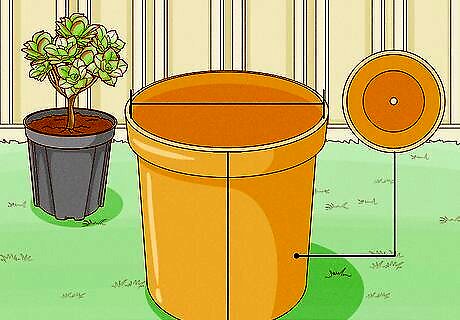
Choose a slightly roomier, well-draining pot for your succulent. Repotting is all about giving your succulent an upgrade so it has plenty of room to stretch and grow its roots. Your new pot doesn’t have to be massive, but it should look wider and deeper than your succulent’s current planter. Check that the new pot has at least 1 drainage hole at the bottom, so water doesn’t collect at the base. Drainage holes help extra water filter out of the plant instead of collecting at the bottom. If the water can’t drain properly, your succulent may develop root rot.
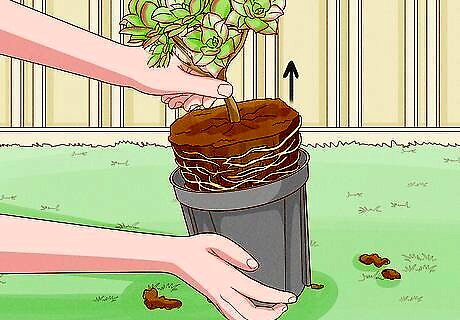
Remove the old succulent gently from its pot or planter. Place the current succulent pot on its side and wrap a soft cloth loosely around the thickest part of the stem if the plant is prickly or spiny. Then, very gently pull and coax the succulent out of its pot. If the succulent is smooth, gently pull it out of the pot with your bare hands.
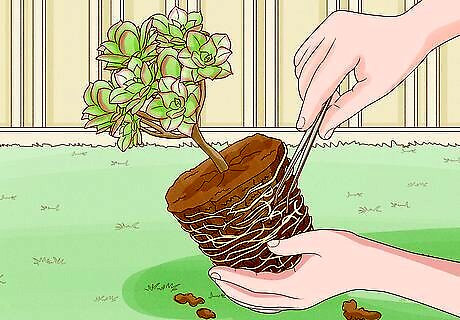
Separate the roots with a pair of garden tweezers. The root ball, or the bottom of the plant, is often tangled and clumped together. Poke your tweezers into the soil a few times to loosen up some of these roots so that they can grow in the new pot more easily. If you don’t have tweezers, try using a fork to separate tangled or compacted roots.
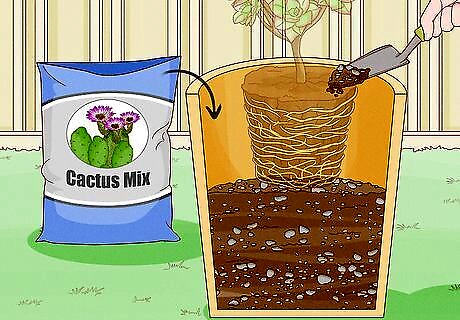
Scoop cactus mix into the new pot until it’s at least halfway full. Add enough mix so the succulent sits at the same level it did in the old pot. As an alternative, an equal mixture of traditional potting soil and coarse sand works just as well. Despite the name, cactus mix isn’t just for cacti—it works for other succulents, like aloe vera. Succulents thrive in a well-draining potting mixture, which is why coarse, sandy soil is ideal.

Set your displaced succulent in the pot and cover its roots with more cactus mix. Check that the succulent is centered, and gently scoop spoonfuls of cactus mix on top of the root system. Completely cover the roots with the mix, filling the pot so the soil is just below the rim. Then, press down on the edges of the soil to pack it in place. If your succulent is especially prickly, like a cactus, use a wooden rod or another long object to press the soil down.
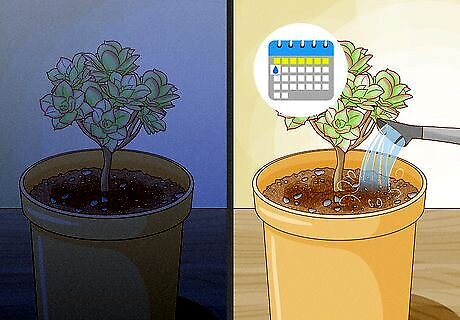
Wait at least 1 week to water your repotted succulent. Your succulent’s roots can get banged up after being repotted (which is completely normal), so they need time to recover and become familiar with their new home. After a week or so, water your succulent as you normally would. Keep your succulent in a dark spot while it heals.
When to Repot a Succulent
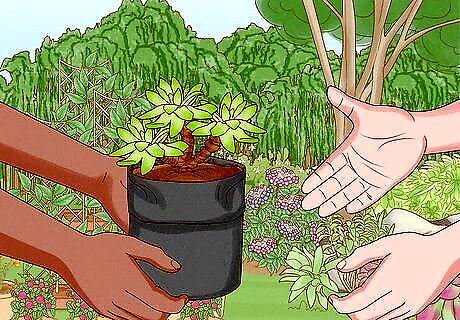
You just bought a succulent from a store or nursery. Most store-bought plants come in tiny nursery pots, which don’t provide nearly enough space for your succulent to grow and thrive. An upgrade is needed to keep your plant happy and healthy. Choose pots that have a diameter of at least 2.5 in (6.4 cm) for singular plants and 4 in (10 cm) for arrangements.
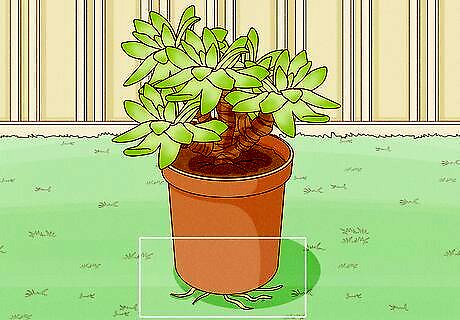
Your succulent is too big for its pot. Lift your succulent’s current pot and check the bottom. Do you see roots growing out of the drainage hole? If so, it’s definitely time to repot your cramped succulent. In some cases, the roots may twist around the soil along the inside of the pot, so consider removing the substrate to get an idea of what the roots are doing.

The old soil doesn’t retain water well. Rapidly draining soil shows that a plant is drinking up the water too quickly. A succulent needs more water as it grows, and a larger pot can help retain moisture so your plant stays happy.
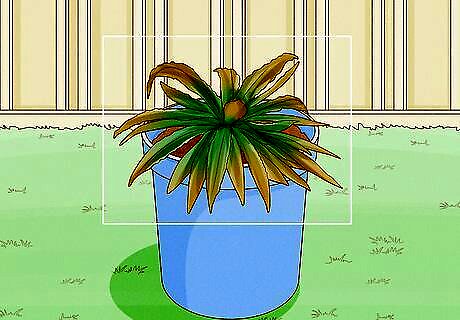
Your succulent looks like it’s wilting or dying. Repotting is a great way to breathe some new life into your plant and is an excellent solution when your succulent looks to be on its last legs. Check for wilted, withered, or brown leaves. Make sure that you’ve ruled out any other causes of your plant’s droopy appearance. Low light and too much or too little water can leave a succulent drooping. Try changing up your plant’s weekly care routine first to see if anything improves.
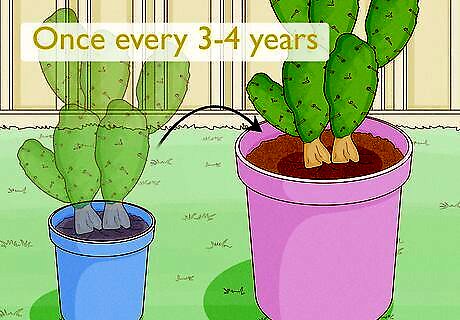
You haven’t repotted your succulent in at least a year. Succulents thrive with fresh potting material and benefit from yearly repotting. Aim to repot your succulents at least once every year, especially if they don’t show any of the above symptoms. Some succulents, like cacti, can be repotted once every 3 to 4 years.
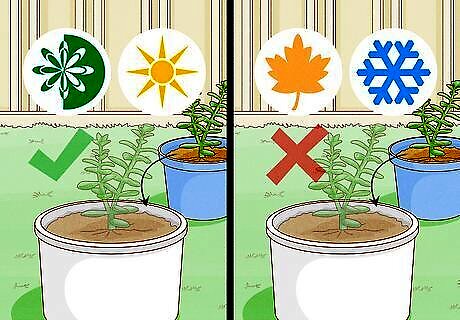
During the active growing season in warm weather. Succulents are actively growing in the spring and summer months, which makes this time of year great for repotting. Once transplanted, the developing roots can settle into the new pot nicely and continue to grow. Succulents are dormant between the fall and winter months, so it’s not a good idea to repot your succulent then.




















Comments
0 comment